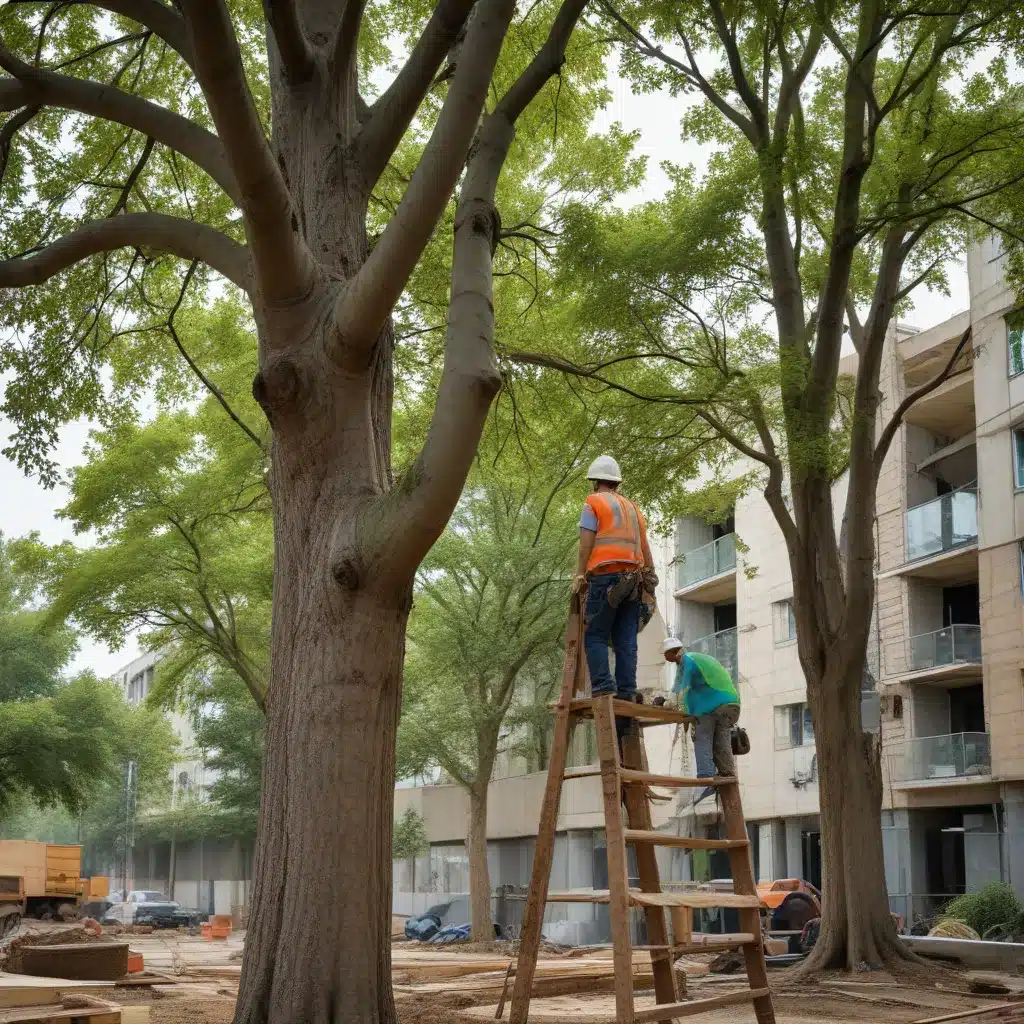
As urban development expands, safeguarding the health of trees amidst construction projects becomes increasingly critical. Trees offer invaluable environmental, economic, and aesthetic benefits – from improving air quality to enhancing property values. However, construction activities can exact a heavy toll on these natural assets, making meticulous preservation strategies a necessity.
At TriCounty Tree Care, we blend sustainable building practices with environmental stewardship to ensure your trees not only survive but thrive during the construction process. By adopting a comprehensive, proactive approach, we can effectively mitigate the risks posed to your greenery and preserve the long-term health of your urban forest.
Tree Preservation Practices
Protecting trees during construction begins with a thorough understanding of their vulnerabilities and the potential threats they face. The root system is particularly susceptible, as excavation, soil compaction, and grade changes can severely compromise their ability to absorb water and nutrients. Additionally, physical damage to the trunk and branches can deplete a tree’s energy reserves and create entry points for disease and pests.
Tree Inventory and Assessment
The first step in safeguarding your trees is to conduct a comprehensive pre-construction inventory and assessment. This process involves cataloguing the species, size, and overall health of each tree on the site. By engaging a certified arborist, you can accurately identify which specimens are worth preserving and which may pose a risk.
Tree Protection Zones
Establishing designated tree protection zones is crucial for minimizing disturbance to the root system. These zones should extend beyond the tree’s dripline – the furthest reach of the canopy – to encompass the critical protected root zone. Implementing physical barriers, such as temporary fencing, can effectively prevent heavy machinery, foot traffic, and material storage from compacting the soil and damaging roots.
Soil Management
Maintaining the integrity of the soil within the tree protection zones is essential. Measures like aeration, mulching, and strategic watering can help mitigate the impacts of soil compaction and ensure adequate moisture and nutrient availability for the roots.
Site Planning and Design
Integrating trees into the site design from the outset can significantly enhance their chances of survival. By carefully positioning new structures, roads, and utilities, you can minimize root disturbance and optimize the placement of tree protection zones.
Site Layout Considerations
When planning the site layout, prioritize the preservation of healthy, mature trees. Strategically arranging buildings, parking areas, and other features to avoid the critical root zones of these valuable specimens can make all the difference in their long-term viability.
Tree-Friendly Construction Techniques
Utilizing specialized construction methods, such as tunneling for utility installations or air spading to excavate around roots, can dramatically reduce the impact on your trees. These techniques minimize the need for open trenching and direct root cutting, preserving the integrity of the root system.
Minimizing Disturbance
Careful planning and execution are essential to minimize disturbance during the construction process. Restricting heavy machinery, material storage, and foot traffic within the tree protection zones can help prevent soil compaction and physical damage to the trees.
Construction Phase Safeguards
Maintaining vigilance throughout the construction phase is crucial to ensure the well-being of your trees. Regular monitoring, prompt damage mitigation, and proactive care can significantly enhance their chances of survival.
Monitoring and Maintenance
Continuous monitoring of tree health during the construction process is essential. Observing for signs of stress, such as wilting leaves, dieback, or reduced growth, allows for early intervention and preventive measures. Implementing a watering and mulching regimen can help sustain the trees’ vitality.
Damage Mitigation Strategies
In the event of unavoidable damage, such as root cutting or trunk wounds, prompt action is required. Strategies like clean pruning, wound treatment, and soil decompaction can help the trees recover and minimize the risk of long-term harm.
Hazard Tree Identification
Regularly inspecting the trees for structural defects or disease is crucial, as these issues can compromise their stability and pose safety risks. Collaborating with a certified arborist can help identify and address any hazardous conditions before they escalate.
Regulatory and Policy Considerations
Adhering to local tree protection ordinances and environmental regulations is essential for ensuring the legality and sustainability of your construction project. Understanding these requirements can help you develop a comprehensive preservation plan that aligns with community and environmental goals.
Local Tree Protection Ordinances
Many municipalities have enacted specific tree protection bylaws that dictate the measures required to safeguard trees during construction. Familiarizing yourself with these regulations and obtaining the necessary permits can help you avoid legal complications and demonstrate a commitment to environmental stewardship.
Environmental Impact Assessments
In some cases, construction projects may require environmental impact assessments to evaluate the potential effects on the local ecosystem, including the preservation of existing trees. Proactively addressing these assessments can help you navigate the regulatory landscape and implement effective mitigation strategies.
Sustainable Development Initiatives
Aligning your construction practices with sustainable development initiatives can further enhance the protection of your trees. By embracing green building techniques and prioritizing the integration of trees into the overall design, you can contribute to the long-term ecological balance of your community.
At TriCounty Tree Care, we are dedicated to helping you navigate the complexities of tree preservation during construction. Our team of certified arborists and horticulture experts can provide comprehensive guidance, from pre-construction assessments to post-project care, ensuring the health and longevity of your urban forest. Contact us today at www.tricountytreecare.com to learn more about our services and how we can assist you in safeguarding your valuable greenery.


